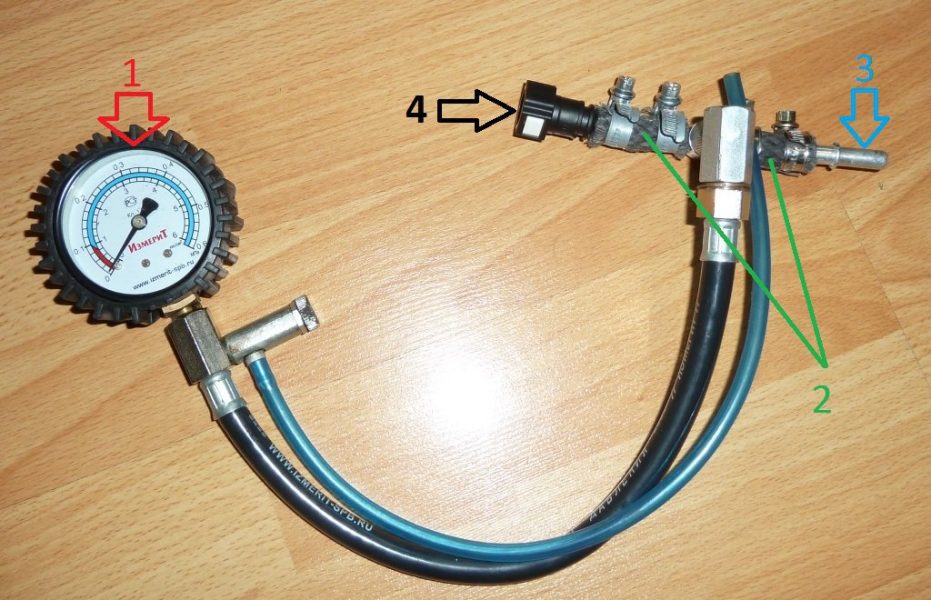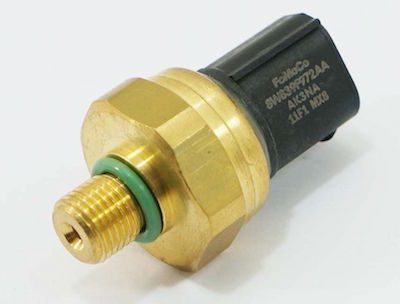
P0191 Fuel Rail Pressure Sensor “A” Circuit Range/Performance
Content
- OBD-II Trouble Code - P0191 - Data Sheet
- What does trouble code P0191 mean?
- Symptoms
- Causes of the P0191 code
- Diagnostic and repair procedures
- How does a mechanic diagnose a P0191 code?
- Common Mistakes When Diagnosing Code P0191
- How serious is the P0191 code?
- What repairs can fix code P0191?
- Additional comments to consider regarding code P0191
- Need more help with your p0191 code?
OBD-II Trouble Code - P0191 - Data Sheet
P0191 Fuel Rail Pressure Sensor "A" Circuit Range/Performance.
P0191 is a Diagnostic Trouble Code (DTC) for "Fuel Rail Pressure Sensor Circuit Range/Performance". This can happen for several reasons and it is up to the mechanic to diagnose the specific cause of this code being triggered in your situation.
What does trouble code P0191 mean?
This Generic Transmission / Engine DTC usually applies to most fuel injection engines, both gasoline and diesel, since 2000. The code applies to all manufacturers such as Volvo, Ford, GMC, VW, etc.
This code strictly refers to the fact that the input signal from the fuel rail pressure sensor does not match the one supplied to the engine. This could be a mechanical failure or an electrical failure, depending on the vehicle manufacturer, fuel type and fuel system.
Troubleshooting steps may vary depending on the manufacturer, type of rail pressure system, type of rail pressure sensor, and wire colors.
Note. This code may be related to:
- OBD-II Trouble Code P0171 (Fuel system too rich)
- OBD-II Trouble Code P0172 (Excessively Lean Fuel System)
Symptoms
Symptoms of a P0191 engine code may include:
- Malfunction Indicator Lamp (MIL) illuminated
- Lack of power
- Engine starts but does not run
- Decreased fuel economy
- Engine may stall or hesitate
- The engine may shut off when the vehicle is stopped
- Unusual smell from the exhaust pipe
- No noticeable symptoms
- DTCs P0171 and/or P0172 are stored in the power control module.
Causes of the P0191 code
Possible reasons for setting this code:
- High fuel pressure
- Low fuel pressure
- Damaged FRP sensor
- Excessive resistance in the circuit
- Vacuum leaks
- Low or no fuel level
- Defective fuel pressure sensor
- Fuel Pressure Sensor Circuit Malfunction
- Faulty fuel pressure sensor connector
- Defective fuel pressure regulator
Diagnostic and repair procedures
A good starting point is always to check the Technical Service Bulletins (TSB) for your particular vehicle. Your problem may be a known issue with a known manufacturer-released fix and could save you time and money while troubleshooting.
Also, with this specific code, make sure you don't have any fuel pump / fuel pressure related codes. If you have any other codes indicating a problem with the fuel pump, diagnose this code first and ignore the P0191 code. Especially when it comes to a launch problem.
Then find the fuel rail pressure sensor on your specific vehicle. It might look something like this:

Once detected, visually inspect the connectors and wiring. Look for scuffs, scuffs, exposed wires, burn marks, or molten plastic. Disconnect the connectors and carefully inspect the terminals (metal parts) inside the connectors. See if they look rusty, burnt, or perhaps green compared to the usual metallic color you're probably used to seeing. If terminal cleaning is required, you can purchase electrical contact cleaner at any parts store. If this is not possible, find 91% rubbing alcohol and a light plastic bristle brush to clean them. Then let them air dry, take a dielectric silicone compound (the same material they use for bulb holders and spark plug wires) and place where the terminals make contact.
Then check that the vacuum hose connecting the sensor to the intake manifold is not leaking (if used). Inspect all vacuum hose connections at the rail pressure sensor and intake manifold. Replace if necessary.
If you have a scan tool, clear the diagnostic trouble codes from memory and see if the code returns. If this is not the case, then there is most likely a connection problem.
If the code returns, we will need to test the sensor with a mechanical pressure gauge. Turn off the key first, then connect the fuel pressure sensor. Then connect a scan tool and observe the fuel pressure on the scan tool. Turn on the key and observe the pressure on the gauge versus the readings on the scan tool. The scan tool and transducer must be within 5 psi. An inch apart.
If all tests have passed so far and you keep getting a P0191 code, the last thing to check is the connections in the PCM. Disconnect the connectors and carefully inspect the terminals (metal parts) inside the connectors. See if they look rusty, burnt, or maybe green compared to the usual metallic color you're probably used to seeing.
If all tests pass, but you still get the P0191 code, it most likely indicates a PCM failure. Before replacing the PCM is warranted, it is recommended that you perform a hard reset (disconnect the battery). It may also be necessary to replace the fuel rail pressure sensor.
CAUTION! On diesel engines with common rail fuel systems: if a fuel rail pressure sensor is suspected, you can have a professional install the sensor for you. This sensor may be installed separately or may be part of the fuel rail. In any case, the fuel rail pressure of these diesel engines at warm idle is typically at least 2000 psi, and under load can be well over 35,000 psi. If not properly sealed, this fuel pressure can cut the skin, and diesel fuel has bacteria in it that can cause blood poisoning.
How does a mechanic diagnose a P0191 code?
- The mechanic will use an OBD-II scanner to obtain freeze frame data to find out what condition the car was in when DTC P0191 was set by the power control module (PCM).
- Completes a test drive and uses real-time data to determine if fuel pressure readings are normal.
- Uses a fuel pressure tester to determine if there is a sensor problem or a fuel pressure problem.
- If the fuel pressure is OK, they will use an oscilloscope to check the fuel rail pressure sensor connector and wiring. The purpose of this is to confirm that the sensor circuitry is intact.
- The sensor is most likely faulty if the actual fuel pressure is OK and the sensor circuitry is good.
Common Mistakes When Diagnosing Code P0191
A common mistake when diagnosing DTC P0191 is to ignore other components that may need to be repaired and replace the fuel rail pressure sensor first.
Loose or frayed wiring, a faulty fuel pressure regulator, or a faulty fuel pump are things that are often overlooked when diagnosing and completing repairs.
How serious is the P0191 code?
DTC P0191 is considered serious as it is known to cause drivability issues. Driving with this code may cause the vehicle to stall or oscillate while driving. There may also be an increase in fuel consumption, which can be costly. It is important to take this code seriously and diagnose and fix it as soon as possible.
What repairs can fix code P0191?
- Replacing the fuel pump
- Replacing the fuel pressure regulator
- Repair any broken, frayed, or shorted wires leading to the fuel pressure sensor.
- Repair of a rusted connector to the fuel pressure sensor
- Fuel pressure sensor replacement
- Fixing any vacuum leaks in the engine
Additional comments to consider regarding code P0191
In most cases, there are other components that cause this DTC. Take your time and consider all possibilities before concluding that the fuel rail pressure sensor is defective. Also, make sure you have the proper tools needed for diagnosis. You will need an OBD-II scanner and an oscilloscope.
Need more help with your p0191 code?
If you still need help with DTC P0191, post a question in the comments below this article.
NOTE. This information is provided for informational purposes only. It is not intended to be used as repair advice and we are not responsible for any action you take on any vehicle. All information on this site is protected by copyright.

3 comment
anonym
e CO CO Hyundai Potter 2012
Stefano
Kia xceed LPG loses power from one moment to the next and the engine goes into protection mode, turning at max 1000 rpm, I go to an auto electrician (I'm in the mountains and there are no Kia dealers in the area) for diagnosis and I check the P0191 fuel pressure error.
Once the error has been reset, the engine revs up again, I run on petrol for a few days and I go to the Kia dealership to explain the problem but they tell me that if I don't show up with the error in progress, they can't intervene, their diagnosis is ok.
I repair and reconnect the BRC lpg and I circulate for about a week without problems but the problem comes back exactly as before, I know I'm forced to have the error reset again being on vacation ..
advice?
Holonek Constantine
what signal level does the ramp pressure sensor have at atmospheric pressure